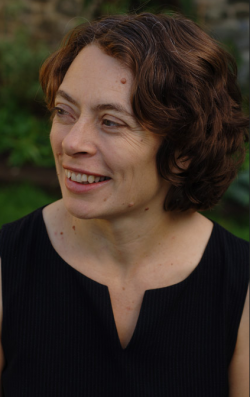 WHEN I was a child, plastic was an exciting product and new things were being made all the time. Our class at school did a (probably cringe-making) variety show which included the twin daughters of the Fawley Esso oil refinery dancing in brightly coloured plastic clothes. A few years later, my father had his first cine camera, and our favourite clip was always our Auntie Audrey coming out of a little shop near Oban, (in the rain), saying, “Oh Tim, I’ve got my plastic mac on!”
WHEN I was a child, plastic was an exciting product and new things were being made all the time. Our class at school did a (probably cringe-making) variety show which included the twin daughters of the Fawley Esso oil refinery dancing in brightly coloured plastic clothes. A few years later, my father had his first cine camera, and our favourite clip was always our Auntie Audrey coming out of a little shop near Oban, (in the rain), saying, “Oh Tim, I’ve got my plastic mac on!”
Plastic has been part of our lives. It seemed indispensable – and now it is the great anathema of the 21st century. It was going to save the world – and now it is flooding the oceans and condemning sea and river creatures to horrible deaths.
Our love-hate relationship with plastic is the theme of an ongoing project called w-RAP, involving Arts University Bournemouth, the Museum of Design in Plastics, Wave arts education agency, Poole’s Lighthouse arts centre and SoundStorm music education agency.
The Lighthouse’s Sherling studio was the venue for the premiere of Shaftesbury composer Karen Wimhurst’s w-RAP TWO: A Plastics Serenade for a Synthetic Century.
Karen, who is deeply committed to environmental concerns and the wellbeing of the natural world, describes the background to her new work in the programme notes, beginning with a reference to a 1940s copy of House Beautiful magazine, which had a map of “Synthetica “ printed to educate the public about the synthetic world we were entering.
“In the light of the Pacific Garbage Patch, we come to this with a sense of irony,” says Karen. “However, plastics were born in a fervour of excitement. The end of poverty was anticipated alongside a cessation of exploitation of the natural world (the slaughter of elephants for ivory billiard balls was a major concern.)” By the mid-70s, plastic production had outstripped steel and the “Plastic Age” truly dawned.
 Karen, a brilliant wind musician, recalls playing a plastic clarinet and dancing to vinyl when she was a child. Records, cassettes, mini-discs, iPods … “I feel as a composer,indebted to plastics, as well as horrified by microfibres in our water systems.”
Karen, a brilliant wind musician, recalls playing a plastic clarinet and dancing to vinyl when she was a child. Records, cassettes, mini-discs, iPods … “I feel as a composer,indebted to plastics, as well as horrified by microfibres in our water systems.”
It is against this contradictory background, that w-RAP TWO explores the paradox of plastic – cheap, useful, employing millions of people, saving wildlife (elephants are no longer killed to provide ivory for piano keys), set against the unfolding environmental catastrophe.
The lights come up on a white set, wrapped in various kinds of plastic. The Singer (soprano Brittany Soriano) and musicians (trumpeter Elaine Close and Ole Rudd on vinyl) enter and begin to remove the wrapping. The Singer wears a decorative dress of white plastic (set and costume were designed by Paige Gregory).
The work is in ten movements, following the Singer on her journey exploring a history of people and plastic – through the chemical processes that made Synthetica, the dreams of a better world, the creation of Bakelite and its multiple uses, the alluring invention of malleable clear cellophane, plastic in war and peace, plastics freeing the housewife from the drudgery of scrubbing, vinyl records offering the “[plastic] potency of cheap music” (to misquote Noel Coward), the space/energy/weight/money-saving qualities of plastic …
Through a powerful libretto and Wimhurst’s ethereal and sometimes shocking music that creates colours and explosions in the listener’s mind, the composer challenges our post-Blue Planet II convictions – plastic good, plastic bad?
“Take plastics out of our lives and what do you get? Complete breakdown.”
It is not a conclusion: it is a provocation – w-RAP TWO is an artist’s response to the greatest environmental challenge facing the planet.
FC